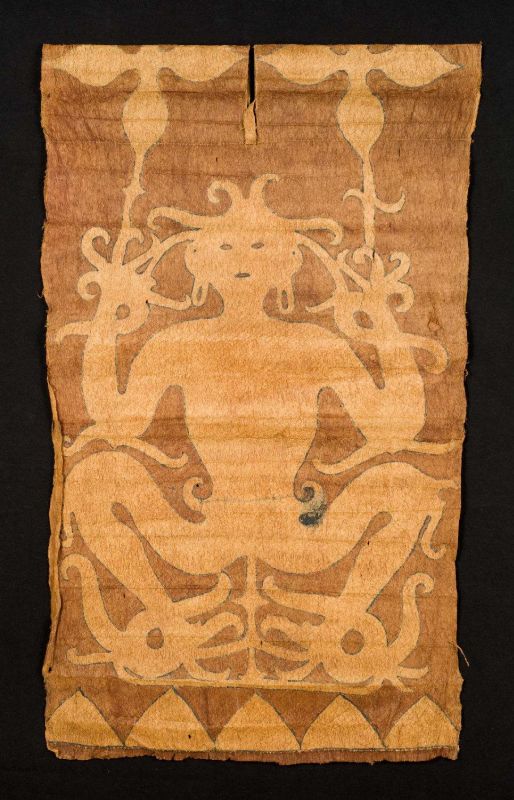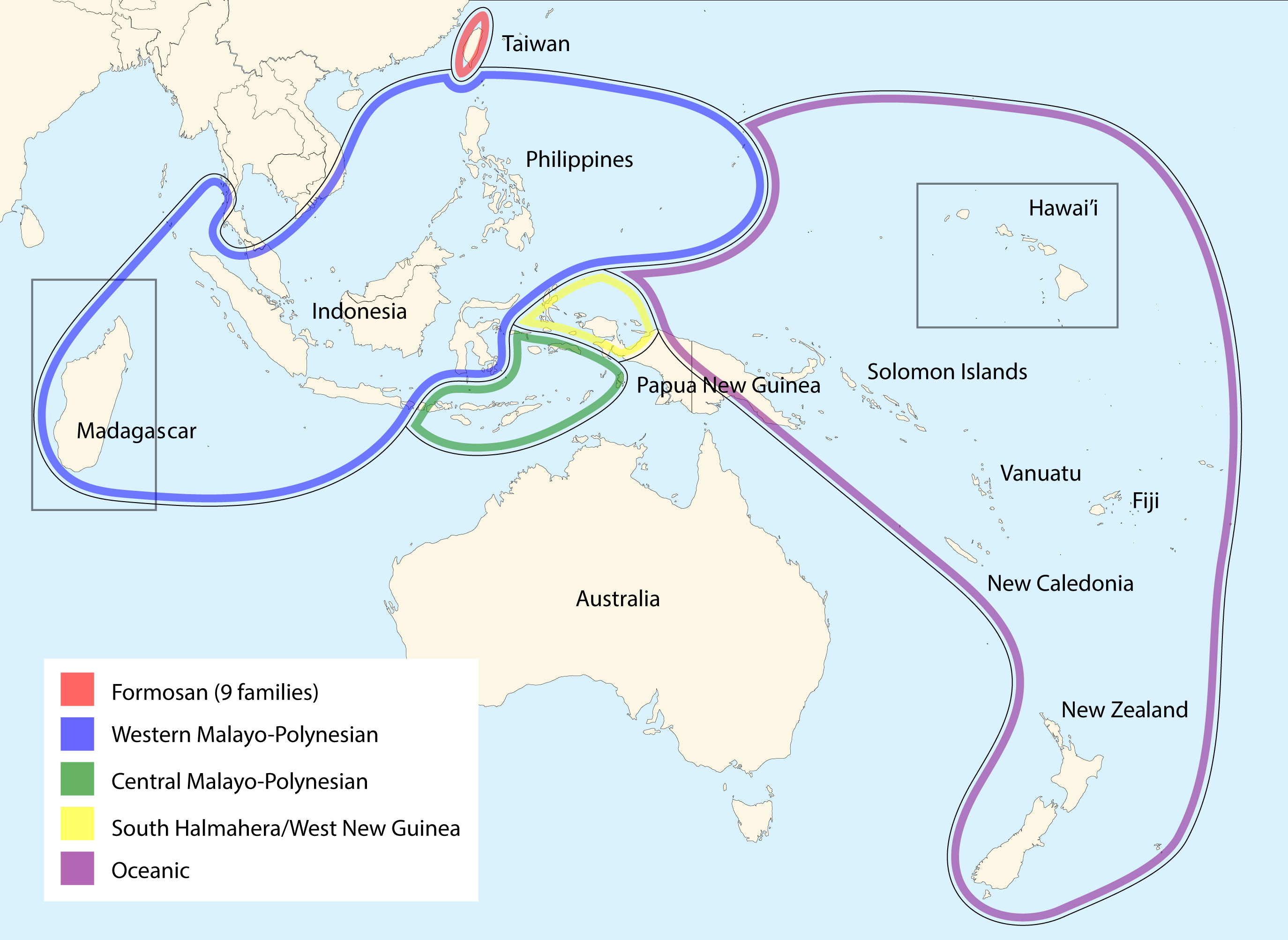|
Barkcloth
Barkcloth or bark cloth is a versatile material that was once common in Asia, Africa, and the Pacific. Barkcloth comes primarily from trees of the family Moraceae, including '' Broussonetia papyrifera'', '' Artocarpus altilis'', '' Artocarpus tamaran'', and '' Ficus natalensis''. It is made by beating sodden strips of the fibrous inner bark of these trees into sheets, which are then finished into a variety of items. Many texts that mention "paper clothing" are actually referring to barkcloth. Some modern cotton-based fabrics are also named "barkcloth" for their resemblance to these traditional fabrics. Traditional Austronesia Before the development of woven textiles, barkcloth made from trees belonging to the mulberry family ( Moraceae) were an important aspect of the pre-Austronesian and Austronesian material culture during the Neolithic period. Stone barkcloth beaters, in particular, are considered part of the "Austronesian toolkit." They have been found in abundance i ... [...More Info...] [...Related Items...] OR: [Wikipedia] [Google] [Baidu] |
Broussonetia Papyrifera
The paper mulberry (''Broussonetia papyrifera'', syn. ''Morus papyrifera'' L.) is a species of flowering plant in the family Moraceae. It is native to Asia,''Broussonetia papyrifera''. Flora of North America. where its range includes mainland China, Taiwan, Japan, Korea, Southeast Asia, , and India. It is widely cultivated elsewhere and it grows as an in New Zealand, parts of Europe, the United States, and Africa. Other common names include tapa cloth tree.
|
Ficus Natalensis
''Ficus natalensis'' is a tree in the family ''Moraceae''. It is commonly known as the natal fig in South Africa. In central and western Uganda, where it has an important cultural value, it is known as ''omutuba'' to the Baganda people and ''omutoma'' to the Banyakitara peoples. In English is sometimes referred as barkcloth fig. It is commonly mistaken for its cousin the Ficus thonningii also known as ''mugumo'' to the Agikuyu. These trees are distributed from north-eastern South Africa to Uganda and Kenya. It is a popular species to cultivate as bonsai due to its fast growth and hardy nature. The bark of the tree is harvested, without harming the tree, to make barkcloth, an environmentally-friendly, renewable material. Skilled artisans incorporate this unique fabric into many modern uses, including fashion, accessories, housewares, interior design, and art. The vision is to create sustainable jobs in East Africa by creating a global demand for barkcloth Barkcloth or bar ... [...More Info...] [...Related Items...] OR: [Wikipedia] [Google] [Baidu] |
Austronesian Peoples
The Austronesian people, sometimes referred to as Austronesian-speaking peoples, are a large group of peoples who have settled in Taiwan, maritime Southeast Asia, parts of mainland Southeast Asia, Micronesia, coastal New Guinea, Island Melanesia, Polynesia, and Madagascar that speak Austronesian languages. They also include indigenous ethnic minorities in Vietnam, Cambodia, Myanmar, Thailand, Hainan, the Comoros, and the Torres Strait Islands. The nations and territories predominantly populated by Austronesian-speaking peoples are sometimes known collectively as Austronesia. The group originated from a prehistoric seaborne migration, known as the Austronesian expansion, from Taiwan, circa 3000 to 1500 BCE. Austronesians reached the Batanes Islands in the northernmost Philippines by around 2200 BCE. They used sails some time before 2000 BCE. In conjunction with their use of other maritime technologies (notably catamarans, outrigger boats, lashed-lug boats, and the crab ... [...More Info...] [...Related Items...] OR: [Wikipedia] [Google] [Baidu] |
Austronesian Expansion
The Austronesian people, sometimes referred to as Austronesian-speaking peoples, are a large group of peoples who have settled in Taiwan, maritime Southeast Asia, parts of mainland Southeast Asia, Micronesia, coastal New Guinea, Island Melanesia, Polynesia, and Madagascar that speak Austronesian languages. They also include indigenous ethnic minorities in Vietnam, Cambodia, Myanmar, Thailand, Hainan, the Comoros, and the Torres Strait Islands. The nations and territories predominantly populated by Austronesian-speaking peoples are sometimes known collectively as Austronesia. The group originated from a prehistoric seaborne migration, known as the Austronesian expansion, from Taiwan, circa 3000 to 1500 BCE. Austronesians reached the Batanes Islands in the northernmost Philippines by around 2200 BCE. They used sails some time before 2000 BCE. In conjunction with their use of other maritime technologies (notably catamarans, outrigger boats, lashed-lug boats, and the crab claw ... [...More Info...] [...Related Items...] OR: [Wikipedia] [Google] [Baidu] |
Artocarpus Tamaran
''Artocarpus tamaran'', also known as elephant jack in English language, English, tarap tempunan in Malay language, Malay, and more locally as timbangan, tamaran, entawa or wi yang, is a species of flowering plant, a fruit tree in the Moraceae, fig Family (biology), family, that is native to Southeast Asia. Description The species grows as a monoecy, monoecious tree to 40 m in height, with a Trunk (botany), bole of up to 10 m, buttress root, buttresses to 3 m, and with white latex. The oval leaves are 27–35 cm long by 10–18 cm wide. The globular inflorescences occur in the leaf axils. The fruits are cylindrical or oblong multiple fruit, syncarpous infructescences, 10–15 cm by 5 cm in diameter, covered by short, flexible spines, and ripening yellowish. The seeds are covered by an edible, sweet, white aril. Distribution and habitat The species is endemism, endemic to Borneo, where it occurs naturally in lowland, coastal and hill mixed d ... [...More Info...] [...Related Items...] OR: [Wikipedia] [Google] [Baidu] |
UNESCO Intangible Cultural Heritage Lists
UNESCO established its Lists of Intangible Cultural Heritage with the aim of ensuring better protection of important intangible cultural heritages worldwide and the awareness of their significance.Compare: This list is published by the Intergovernmental Committee for the Safeguarding of Intangible Cultural Heritage, the members of which are elected by State Parties meeting in a General Assembly. Through a compendium of the different oral and intangible treasures of humankind worldwide, the programme aims to draw attention to the importance of safeguarding intangible heritage, which UNESCO has identified as an essential component and as a repository of cultural diversity and of creative expression. The list was established in 2008 when the 2003 Convention for the Safeguarding of the Intangible Cultural Heritage took effect. , the programme compiles three lists. The longer Representative List of the Intangible Cultural Heritage of Humanity comprises cultural "practices and expre ... [...More Info...] [...Related Items...] OR: [Wikipedia] [Google] [Baidu] |
Pre-Austronesian
The Austronesian people, sometimes referred to as Austronesian-speaking peoples, are a large group of peoples who have settled in Taiwan, maritime Southeast Asia, parts of mainland Southeast Asia, Micronesia, coastal New Guinea, Island Melanesia, Polynesia, and Madagascar that speak Austronesian languages. They also include indigenous ethnic minorities in Vietnam, Cambodia, Myanmar, Thailand, Hainan, the Comoros, and the Torres Strait Islands. The nations and territories predominantly populated by Austronesian-speaking peoples are sometimes known collectively as Austronesia. The group originated from a prehistoric seaborne migration, known as the Austronesian expansion, from Taiwan, circa 3000 to 1500 BCE. Austronesians reached the Batanes Islands in the northernmost Philippines by around 2200 BCE. They used sails some time before 2000 BCE. In conjunction with their use of other maritime technologies (notably catamarans, outrigger boats, lashed-lug boats, and the crab claw s ... [...More Info...] [...Related Items...] OR: [Wikipedia] [Google] [Baidu] |
Buganda
Buganda is a Bantu peoples, Bantu kingdom within Uganda. The kingdom of the Baganda, Baganda people, Buganda is the largest of the List of current non-sovereign African monarchs, traditional kingdoms in present-day East Africa, consisting of Uganda's Districts of Uganda, Central Region, including the Ugandan capital Kampala. The 14 million ''Baganda'' (singular ''Muganda''; often referred to simply by the root word and adjective, Ganda) make up the largest Ugandan region, representing approximately 16% of Demographics of Uganda, Uganda's population. History of Buganda, Buganda's history includes unification during the 13th century by the first king, Kato Kintu, the founder of Buganda's Kintu dynasty, Buganda grew to become one of the largest and most powerful states in East Africa during the 18th and the 19th centuries. During the Scramble for Africa, and following unsuccessful attempts to retain its independence against British Empire, British imperialism, Buganda became the ce ... [...More Info...] [...Related Items...] OR: [Wikipedia] [Google] [Baidu] |
Polynesia
Polynesia ( , ) is a subregion of Oceania, made up of more than 1,000 islands scattered over the central and southern Pacific Ocean. The indigenous people who inhabit the islands of Polynesia are called Polynesians. They have many things in common, including Polynesian languages, linguistic relations, Polynesian culture, cultural practices, and Tradition, traditional beliefs. In centuries past, they had a strong shared tradition of sailing and Polynesian navigation, using stars to navigate at night. The term was first used in 1756 by the French writer Charles de Brosses, who originally applied it to all the list of islands in the Pacific Ocean, islands of the Pacific. In 1831, Jules Dumont d'Urville proposed a narrower definition during a lecture at the Société de Géographie of Paris. By tradition, the islands located in the South Seas, southern Pacific have also often been called the South Sea Islands, and their inhabitants have been called South Sea Islanders. The Hawai ... [...More Info...] [...Related Items...] OR: [Wikipedia] [Google] [Baidu] |
Borneo
Borneo () is the List of islands by area, third-largest island in the world, with an area of , and population of 23,053,723 (2020 national censuses). Situated at the geographic centre of Maritime Southeast Asia, it is one of the Greater Sunda Islands, located north of Java Island, Java, west of Sulawesi, and east of Sumatra. The island is crossed by the equator, which divides it roughly in half. The list of divided islands, island is politically divided among three states. The sovereign state of Brunei in the north makes up 1% of the territory. Approximately 73% of Borneo is Indonesian territory, and in the north, the East Malaysian states of Sabah and Sarawak make up about 26% of the island. The Malaysian federal territory of Labuan is situated on a small island just off the coast of Borneo. Etymology When the sixteenth-century Portuguese explorer Jorge de Menezes made contact with the indigenous people of Borneo, they referred to their island as ''Pulu K'lemantang'', which ... [...More Info...] [...Related Items...] OR: [Wikipedia] [Google] [Baidu] |
Alor Island
Alor () is the largest island in the Alor Archipelago and is one of the 92 officially listed outlying islands of Indonesia. It is located at the eastern end of the Lesser Sunda Islands chain that runs through southeastern Indonesia, which from the west include such islands as Bali, Lombok, Sumbawa, Komodo, and Flores. To the east of the island across the Ombai Strait lie the islands of Wetar (in Maluku Province) and Atauro, the latter belonging to East Timor. To the south, across the Strait of Alor, lies the western part of Timor. To the north lies the Banda Sea. To the west lies Pantar and the other islands of the Alor archipelago, and further yet the rest of the Sunda Islands. Alor Island, as well as the rest of its archipelago, is part of East Nusa Tenggara province. Geography Alor has an area of about 2,125 km2, making it the largest island of the Alor archipelago. Kalabahi is the only town on the island of Alor, with an estimated population of 19,210 in mid 2 ... [...More Info...] [...Related Items...] OR: [Wikipedia] [Google] [Baidu] |





